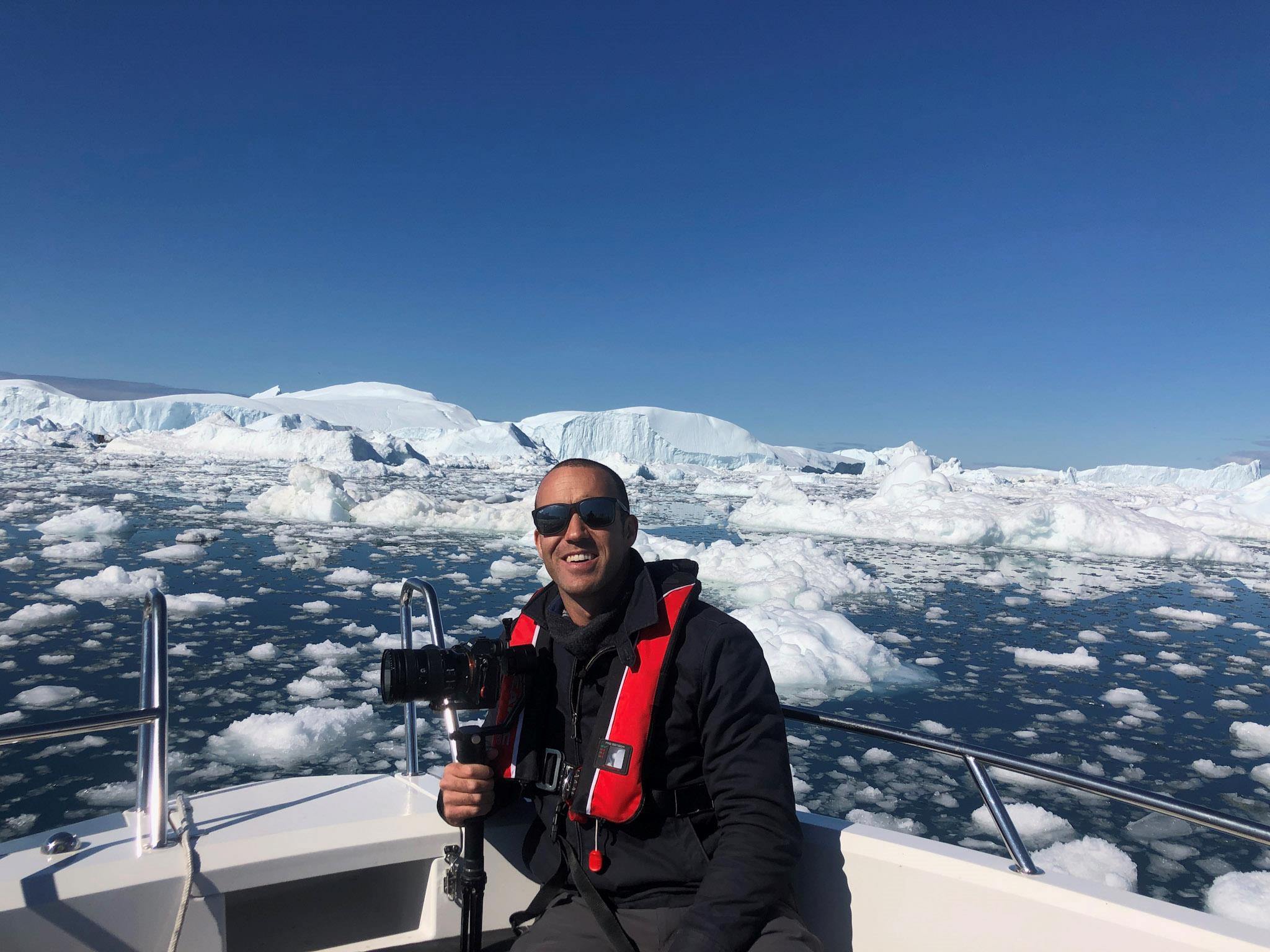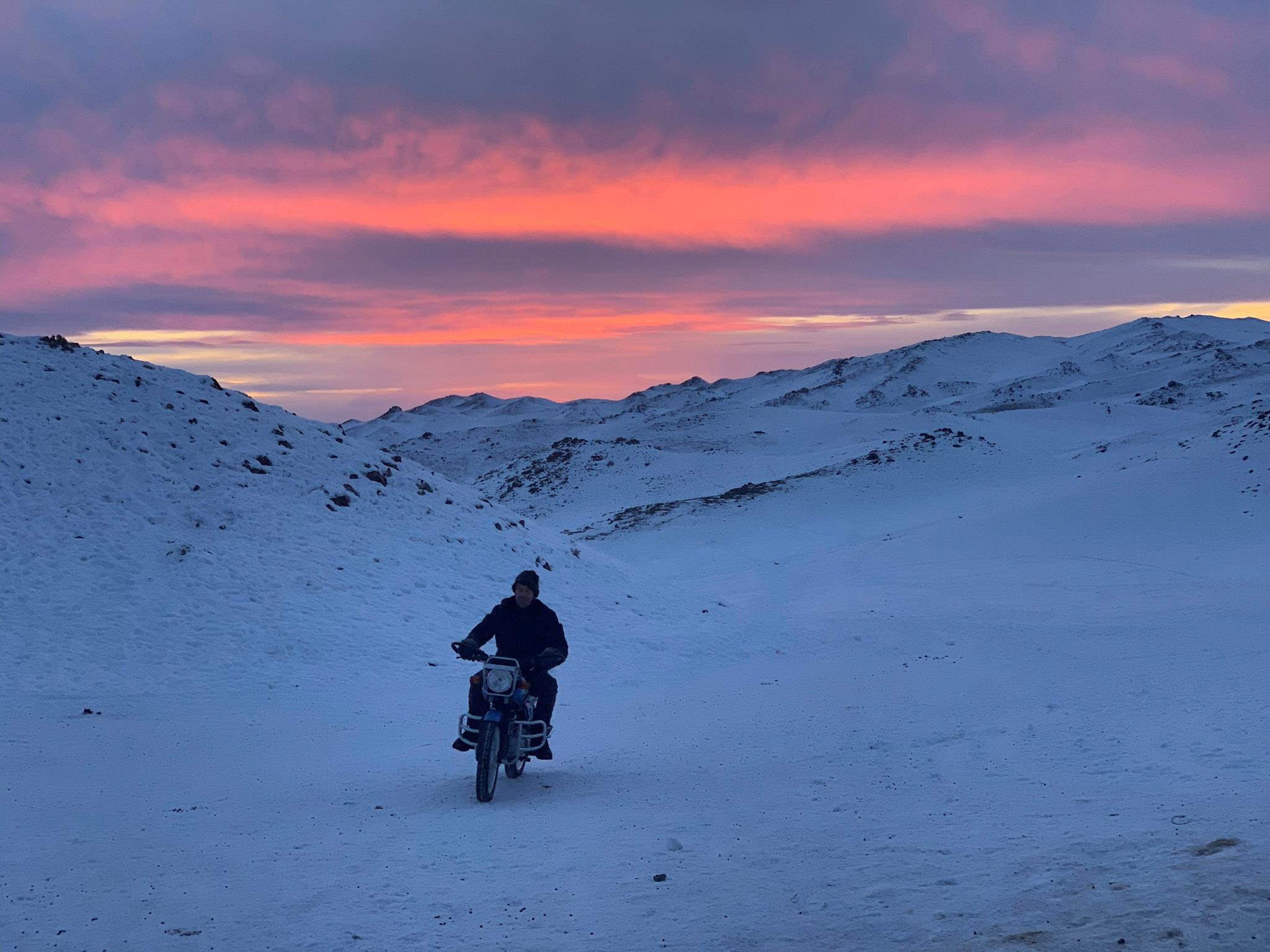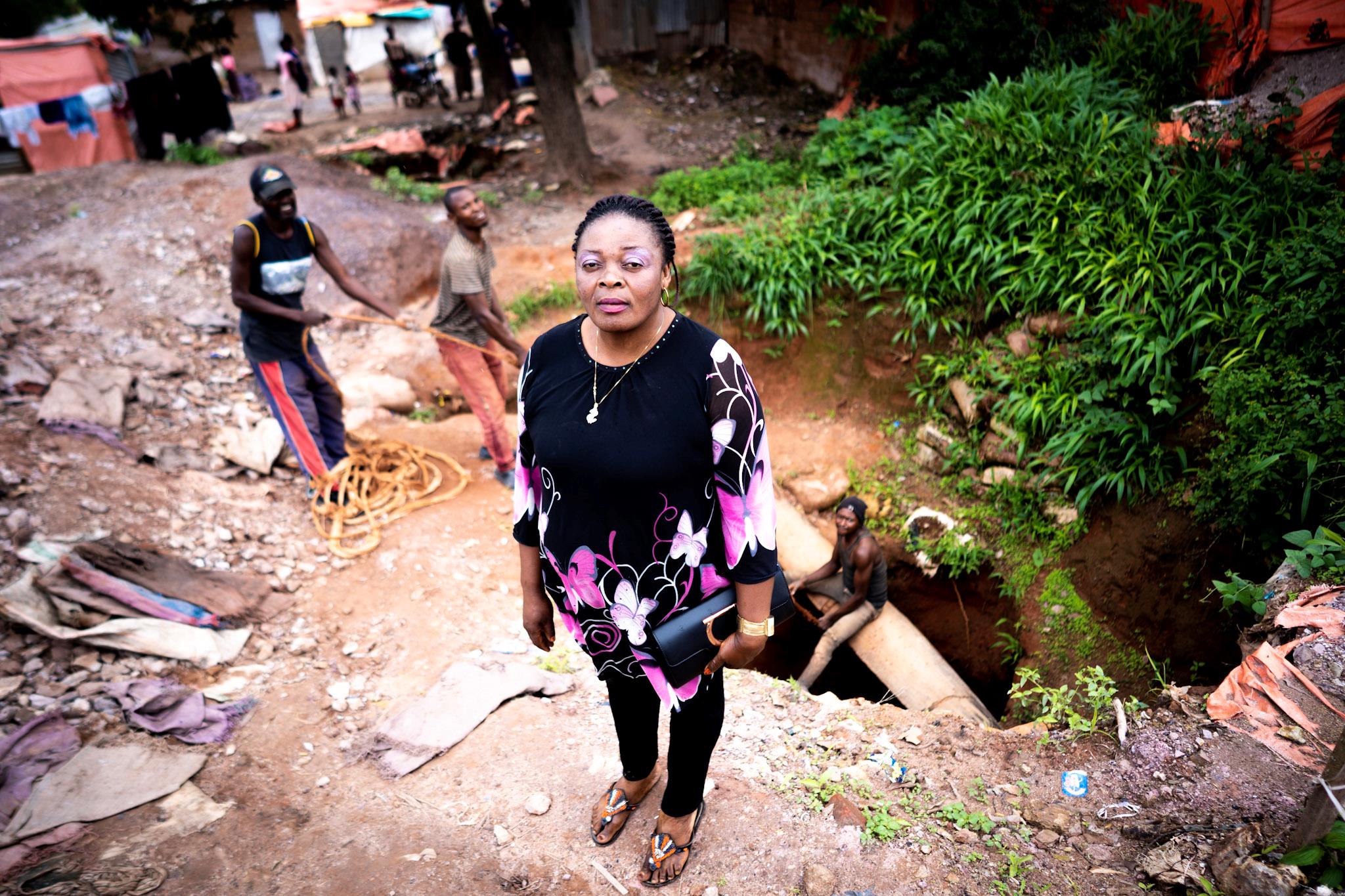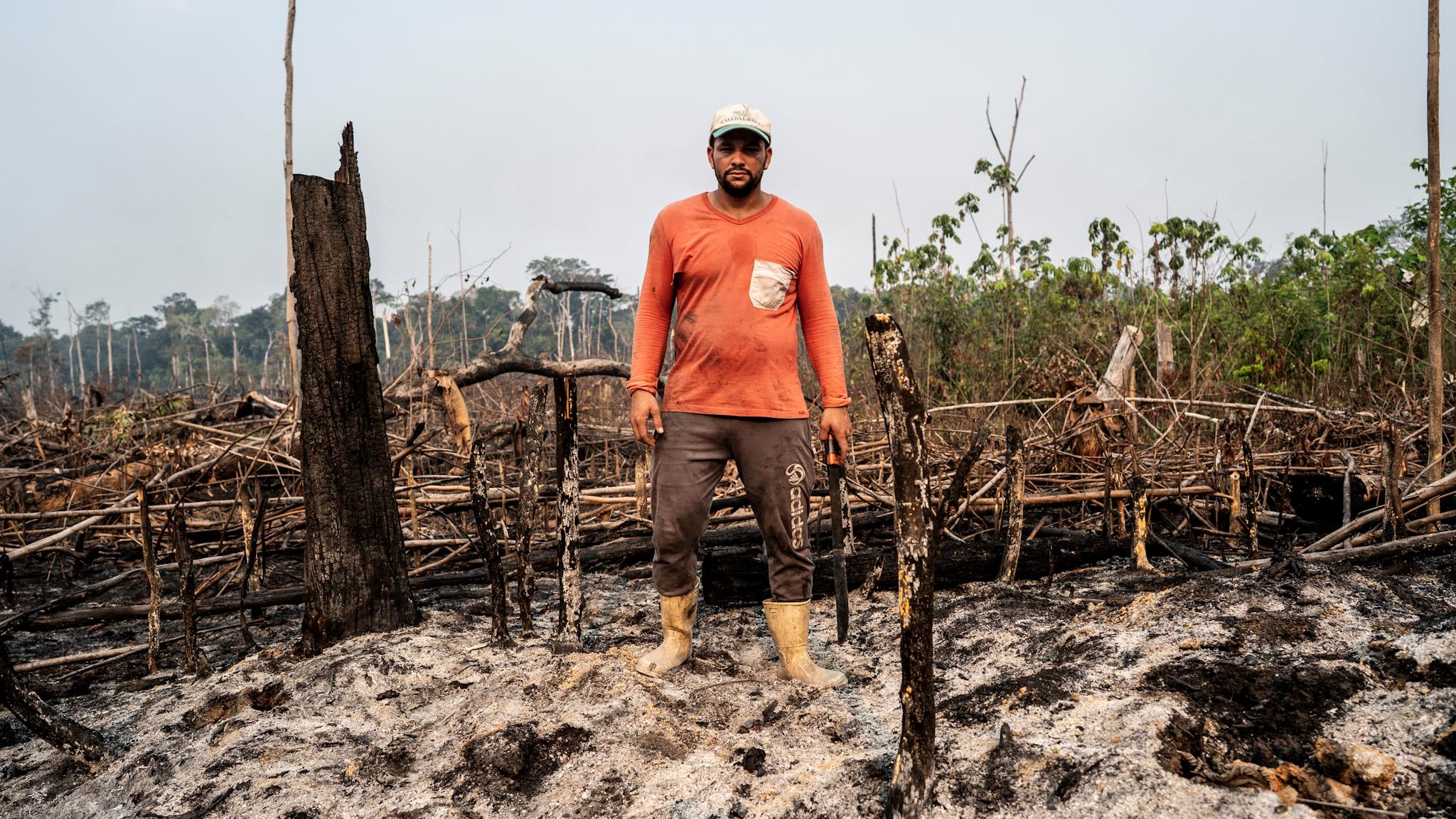(MENAFN- Asia Times) SEOUL – Simon Mundy has returned from the trenches of the climate change wars with a message that is both woeful and inspiring: Things are truly very, very bad, but remarkable solutions exist.
Given that these solutions range far beyond“clean” and“renewable” energies, Mundy's findings hurl down a gauntlet before world leaders meeting to discuss the climate crisis at the UN Climate Change Conference, COP26, in Glasgow, UK, this week.
Currently the financial Times'“Moral Money” editor and a newly minted author, Mundy spent two years traveling around 26 nations, exploring the Amazon rainforest, trekking the Siberian permafrost and clambering into backyard cobalt mines in Congo. He met rogue scientists, cutting-edge entrepreneurs and energy ministers – and interacted with disaster-struck herders, slash-and-burn forest dwellers and desperate child miners.
The result is “Race for Tomorrow: Survival, Innovation and Profit on the Front Lines of the Climate Crisis,” which hit bookshelves on October 28. The timing was sound: Three days prior to the opening of COP26 – which could set critical milestones or fizzle as a damp squib.
Conference attendees would benefit from speed-reading the work before taking their seat at the sessions. While climate change tends to be a doom-and-gloom discourse, Mundy met scientists and entrepreneurs who have developed some astonishing silver bullets.
The challenge Mundy presents to world leaders at COP26 is this: Can the community of nations craft a political-economic framework that would permit these bullets to be fired in a burst large enough to deal with the problem – or will matters spiral further out of control?

Another day at the office for climate-change author Simon Mundy. Photo: Simon Mundy Travel 'n tell Unusually for environmentally focused screeds, Mundy's book is neither a puce-faced jeremiad penned by an activist, nor a dense policy document written in scientific gobbledegook. Given that the scale and complexity of the issue presents a barrier to comprehension, Mundy chose, as his format, the travel narrative.
“Many people are struggling to get their heads around this, there is so much shouting on all sides,” he told Asia Times.“I thought that stories of people and places can be a starting point to get a handle on this…instead of disembodied stats, you have stories of real people in real places.”
The idea was ignited by direct experience.
“In 2016 I moved to India and did some reporting on a very severe drought – the number of farmer suicides was abominable, it was mad, and I saw these empty, cracked, reservoirs,” he recalled.“That was the first time in my life I had been exposed to the immediate impact of climate change.”
Despite intensifying competition between China and the US, the number and lethality of wars is falling worldwide and the nuclear genie has remained in its bottle. Global poverty is on a downward trend, and even the unprecedented Covid pandemic has come nowhere close to being an existential threat.
And while some fear that runaway technologies, such as AI-dominated big tech platforms could be the end of humanity, alarmists in that space are still talking possibilities, rather than realities.
All this leaves leaves climate change as the biggest actual menace to humanity's future.
“It struck me in 2017 that the biggest story on the planet is the global struggle to respond to climate change,” Mundy said.“I don't consider myself an activist, but I had my reporter's nose – the hunger for a big story.”

In Mongolia, increasingly frequent hard winters are killing herds and changing an ancient way of life. Photo: Simon Mundy
Not an activist, perhaps, but Mundy has little time for those who downplay the severity of the crisis, or downright deny its existence.
Some naysayers talk down climate change by proclaiming that the Earth's climate has long oscillated. Mundy shoots this contention down, noting that such changes have in the past been driven by slight shifts in earth's orbit around the sun, solar activity and volcanic motion.
Deep analyses have made clear that the climate is heating up at a dangerously unprecedented rate due to greenhouse gas emissions. Indeed, it would be“extraordinary” if these emissions were not driving temperatures north, Mundy said.
“The conclusion that this is happening is the best-tested scientific theory ever, as it has had so many people trying to find holes in it,” he said. If the science on the topic were false,“it would have to be by far the biggest conspiracy theory in the history of the world.”
Death and despair Mundy encountered persons dying as a result of climate change in the very midst of his research.
“I met this scientist who died four days after I met him – he fell into a crevasse in Greenland,” Mundy said.“There were none of these crevasses 30 years earlier.”
In a completely different part of the world, he traveled to the scene of a disaster of the kind written about in the Old Testament. In northeastern Ethiopia, communities who existed on herding camels, goats and cattle for centuries, if not millennia, are seeing their way of life being virtually wiped out.
“There was severe drought, so less and less grazing,” he said.“Then, heavy rainfalls in Saudi and Yemen created the conditions for this enormous swarm of locusts.”
With their cattle dying and goats and camels tottering, the herders have become almost totally reliant upon government food handouts.“It is drought, followed by locusts – it is Biblical,” Mundy said.“These people are starving.”
In yet another distant geography, a people with similarly ancient habits were suffering a similar catastrophe. However their blight was the opposite of that faced by the Ethiopians: It was caused by falling, not rising, temperatures. That is a conundrum that many – inevitably – fail to understand is linked to the broader trend of global warming.
Mongolia is facing increasingly severe winters as a result of the speed of Arctic ice melt and related flows of heat and moisture, which is“what leads to extreme winters in places like Texas and Mongolia,” Mundy said.
While the“exceptionally tough” Mongolians themselves are leading lives on the steppes that are not far removed from those led by the hordes of Genghis Khan, their herds and mounts are dying.
“They are all losing large numbers of animals and it is pushing them into poverty,” Mundy said.“The animals are dying of starvation and cold as they find it difficult to get enough grass.”
Due to oscillations in temperature, snow melts and creates a layer of ice that prevents grazing. Severe winters have long been a feature of Mongolian existence – they are called“dzud” – but are now becoming more and more frequent, Mundy said.
As a result, herders who have lived for generations in the great outdoor spaces are being forced into urban drift.

Locals – amid open cobalt mines in the Congo – are feeding the global appetite for 'green' batteries, but are hardly benefiting from these natural riches. Photo: Simon Mundy
Victims and villains
As the world lurches toward cleaner and more renewable energy sources, one of the many ironies Mundy encountered was how deadly and unjust the drive to secure those materials can be for those on the frontlines.
Around the town of Kolowezi in the conflict-scarred and poverty-crushed Congo, he saw“enormous natural wealth – and huge poverty and infant mortality.” The area is rich in cobalt – a key component in lithium batteries, as well as smartphones. This vast natural richness is not filtering down to the inhabitants – even to those eking out an entrepreneurial existence by supplying it themselves.
“You walk through this area, and the people have these mine shafts behind their houses and children playing around, and underground these young men are hammering away,” he recalled. Conditions are perilous:“There is no health and safety regulation.”
While loud voices in the West demand the reform of artisanal mining and a halt to the use of child labor, the barriers to change are steep.
“I met child miners…but child labor is a symptom of a wider problem,” he said.“The reason they are mining is that they are not in school, and they are not given school due to corruption, both local and foreign.”
A potentially more perilous meeting took place in Brazil's shrinking Amazon rainforest.
It's a violent location. Mundy recalls sitting at an outside eatery in the town of Boca de Acre when a man staggered past. He had been severely stabbed in the gut. Before venturing into the even more dangerous jungle, Mundy acquired the services of a Brazilian private military contractor.
Biking down a trail, Mundy and his bodyguard spotted“a huge plume of smoke coiling up from the forest.” Warily, the two probed forward. Out of a circle of blazing trees appeared a menacing figure: A“fierce looking” one-eyed man, hefting a machete in one hand and a jerry can full of fuel in the other.
To Mundy's surprise –“I think it shows the sense of immunity under (President Jair) Bolsonaro” – the man, who identified himself as“Enzio,” agree to talk to the British reporter.
He explained that he was burning down forest to clear grazing for cattle, and planned to start a family in the formerly virgin location.
“He said to me, 'Is not like your country, it is difficult to earn money so this is how you move up in the world. I don't have the options you have,'” Mundy recalled.“I am glad I heard his story as, although his activity is so destructive, we have to listen to people like that.”
Mundy found himself feeling empathy.
“Some people would see Enzio as a villain,” Mundy admits.“But he illustrates the complexities of the issue.”

Slashing and burning under way in the heart of the Amazon. Photo: Simon Mundy
The second part of this interview will run in Asia Times on Wednesday.
MENAFN01112021000159011032ID1103083946